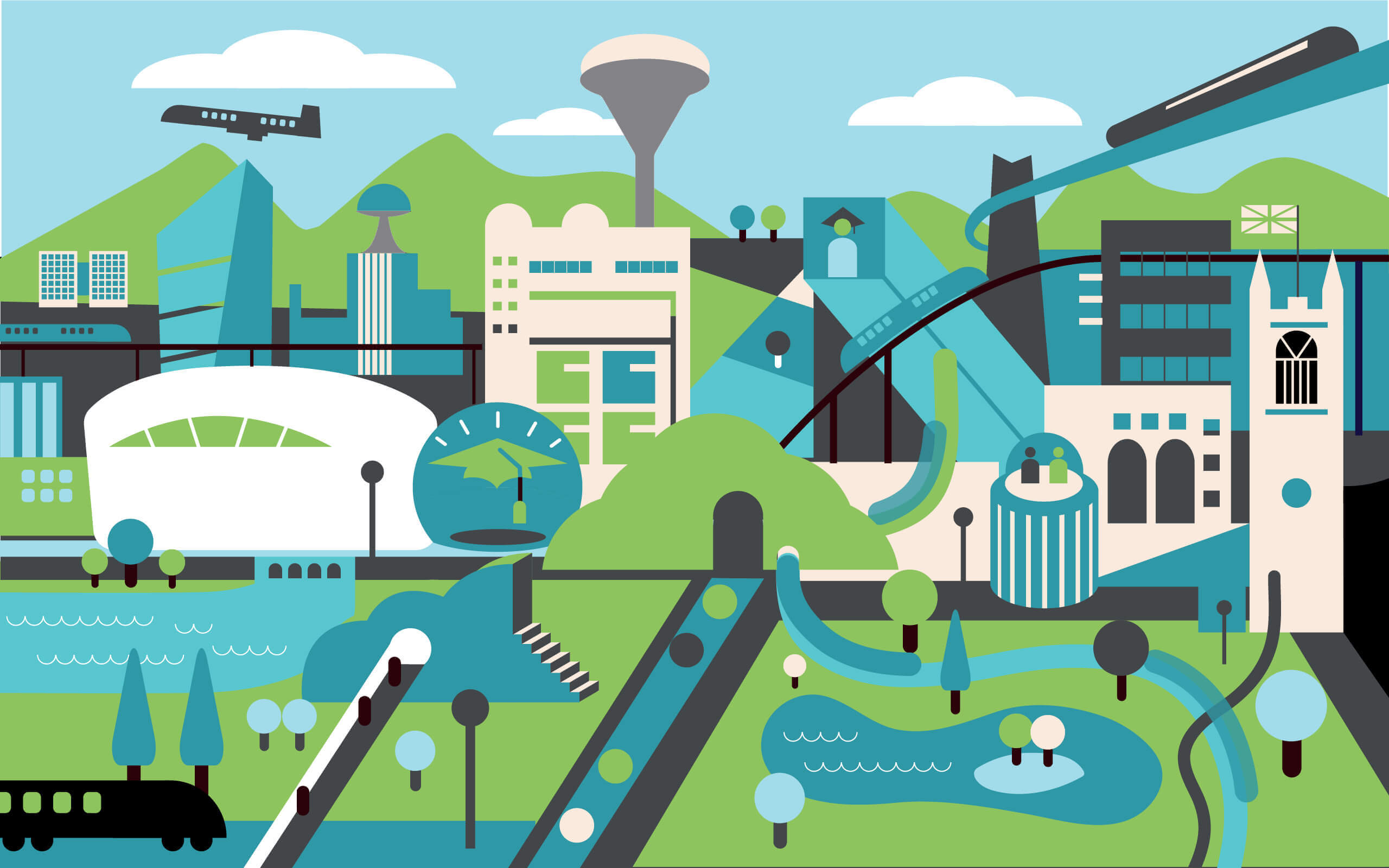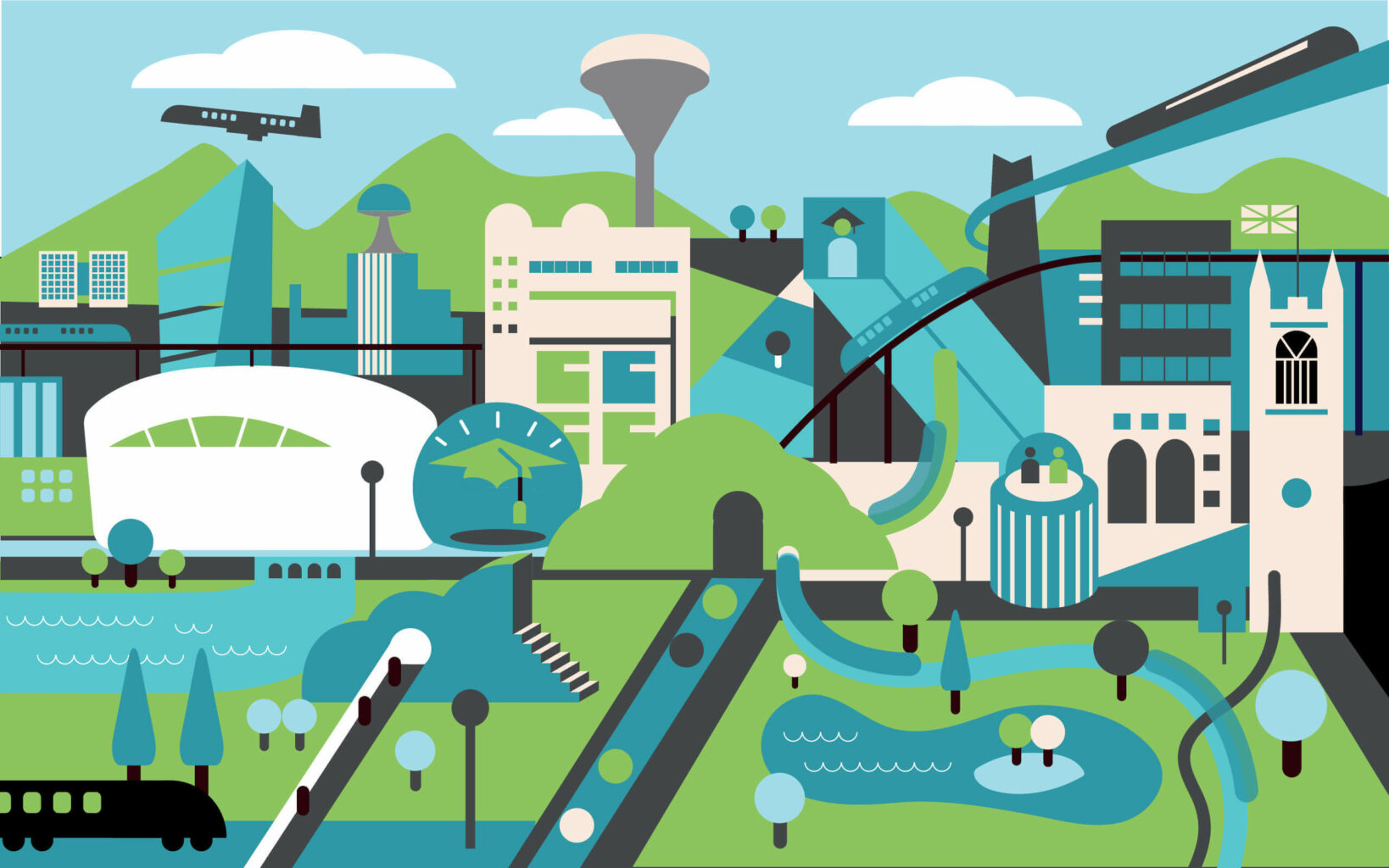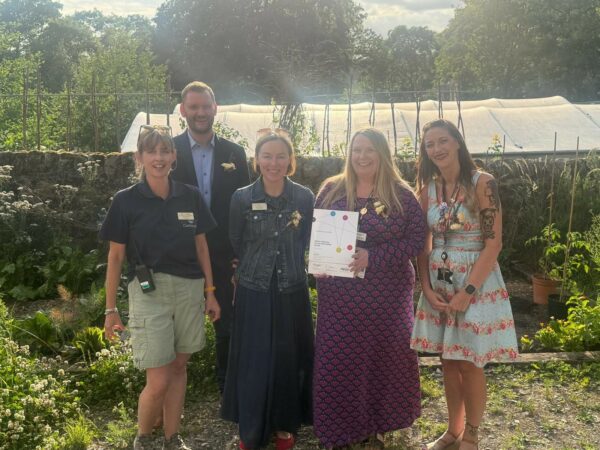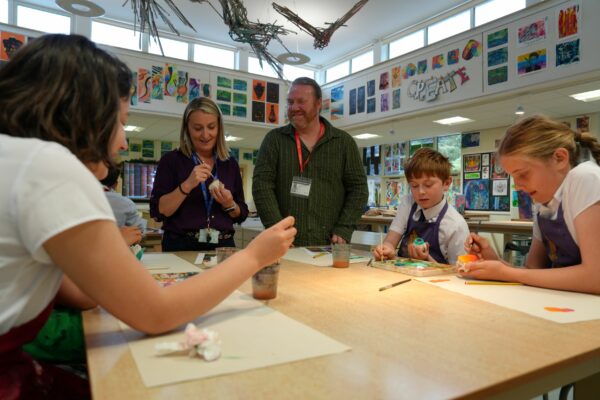Latest News | 14 June 2022
Efforts to reimagine the city featured by university

The major developments shaping the way people live, work, study and visit Derby provide the focus for a feature in the latest edition of the University of Derby magazine.
Containing contributions from Paul Simpson, chief executive of Derby City Council and John Forkin, managing director of Marketing Derby, as well as the university’s pro vice-chancellor dean of the College of Science and Engineering Professor Chris Bussell and pro vice-chancellor dean of the College of Business, Law and Social Sciences Professor Kamil Omoteso, the article explores the major developments that are helping Derby to reimagine itself.
Major projects such as the £200 million regeneration of the Becketwell area, the Eastern Gateway project, the transformation of the Market Hall, the Castleward and Nightingale Quarter residential schemes and the £42 million Moorways Sports Village are held up as examples of how the city centre is attracting major investment and evolving.
It also looks at the university’s own contribution to this evolution, through projects like the new Derby Business School and its wider City Masterplan.
Speaking about developments in the city centre, Mr Simpson told the university’s magazine: “City centres are no longer just places to go and shop.
“They are places for people to congregate, to visit and to see things they are interested in whether that be cultural or historical.
“Very encouragingly, in my opinion, people want more blue and green space in city centres, places where they can sit and relax.
“We saw how important that was during the pandemic; our parks were full because that’s all people were able to do, so bearing that all in mind, it’s time to rethink what a city centre is all about.
“All of those things taken together is why it’s really important now – city centres have got to reinvent themselves and Derby is no different.”

Mr Forkin said: “Every city centre in the country, probably the world, is going through the same thinking in terms of re-purposing, following the pandemic.
“For Derby, the answer is striking more of a balance between people living in, working in and visiting the city centre.”
The feature also gives an insight into the university’s DUST (Derby’s Urban Sustainable Transition), which aims to reimagine Derby for a sustainable future, creating an augmented reality representation of the city, capitalising on its blueways and greenways to increase its vibrancy and prosperity.
Professor Chris Bussell, who is DUST’s project lead, said: “If we look generations ahead, we will see a more socially conscious population coming forward who want liveable cities.
“We need to be looking at how we interface commercial, retail and leisure activity into a common space that has purpose and function.
“The other big piece of work is ensuring the city centre is reflective of and appeals to its diverse communities, particularly as we know some of Derby’s residents never even come into the city centre.
“We’ve got ourselves in a catch 22 situation – if there’s nothing for people to come into the city for, we can’t attract key businesses or retail outlets, which means people won’t come into the city and so on.
“In my view, the way of breaking that circular conversation is by doing something bold, radical, and innovative, something very different for Derby.
“We need to be asking ourselves, what would the city be like if we opened up Markeaton Brook? What if we turned the River Derwent into a key focal point of the city?
“The DUST project is a co-creation project working across the city that will use digital virtual representations to move assets and put them elsewhere in the city and explore other options, and that’s exciting.”
To read the full article in the university’s magazine please click here.
The ‘repurposing of the place’ will be the central theme of the forthcoming Derby Property Summit, which takes place on Wednesday 13 July.
To book your place please click here.


